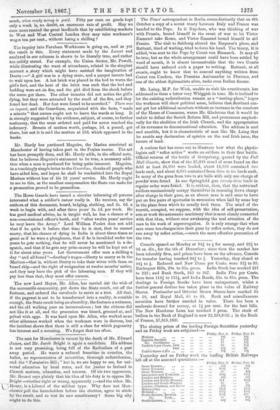A curious fact has come out to illustrate how what
the physio- logists call "reflex action" works on soldiers in their first battle. Official returns of the battle of Gettysburg, quoted by the Pall Mall Gazette, show that of the 27,000 stand of arms found on the field at least 24,000 were loaded, about 12,000 contained 1W.9 loads each, and about 6,000 contained from three to ten loads each. In many of the guns from two to six balls with only one charge of powder were found. In one Springfield gun twenty-three loads in regular order were found. It is evident, then, that the untrained soldiers unconsciously occupy themselves in ramming down charge after charge in their guns, as an absent man is said once to have put on five pairs of spectacles in succession when laid by some boy in the place from which he usually took them. The mind of the recruit, occupied, we suppose, with the idea of self-preservation, sets at work the automatic machinery that is most closely connected with that idea, without ever awakening the real attention of the man to his work of supererogation. It is only strange that when men cram ten charges into their guns by reflex action, they do not run away by reflex action,—much the more effective precaution of the two.


































 Previous page
Previous page